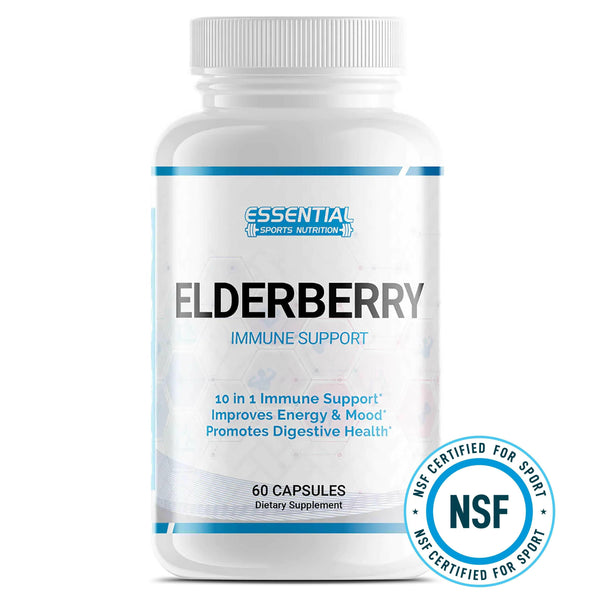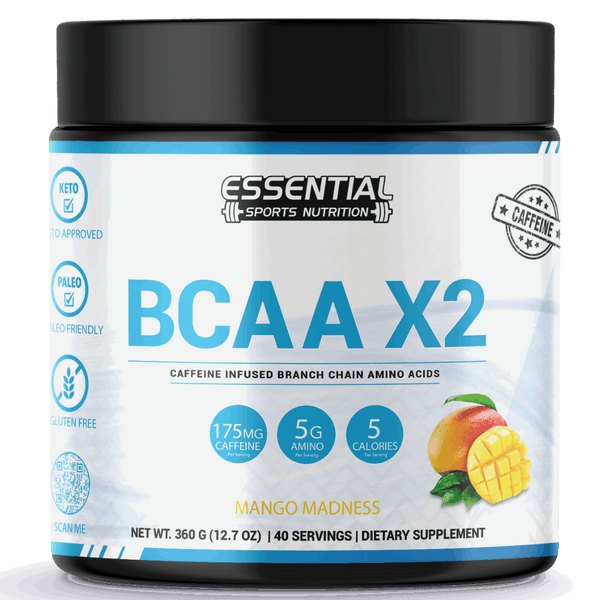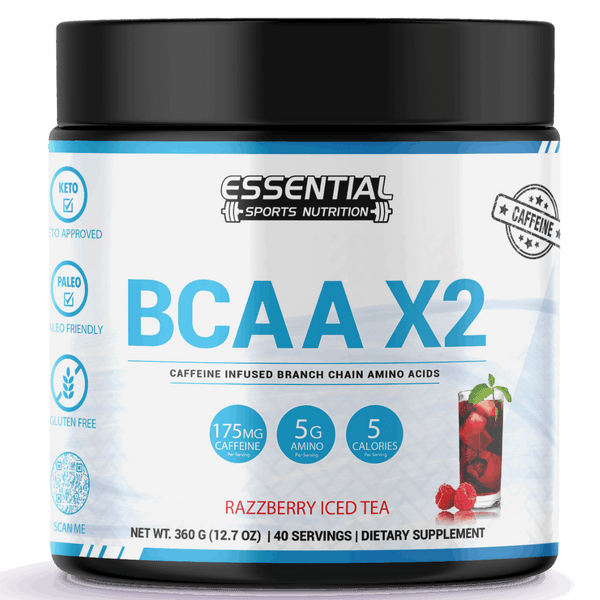Hyperbaric Oxygen Benefits: How 100% Oxygen Can Heal the Body
Facing a slow recovery from injury or struggling with chronic wounds can often feel like a battle against time. You may be searching for ways to speed up healing or enhance your body's natural repair processes.
Amidst the myriad of treatments available, there's one that might not be on your radar: Hyperbaric Oxygen Therapy (HBOT).
Believe it or not, HBOT has been shown to significantly increase oxygen delivery to injured tissues, making it an invaluable tool in promoting faster and more efficient healing. This therapy could unlock the door to better health outcomes for those wrestling with persistent ailments.
This high-pressure solution breathes new life into cells and accelerates recovery. It just may alleviate your medical woes.

Key Takeaways
- Hyperbaric Oxygen Therapy (HBOT) boosts the amount of oxygen in the bloodstream, which can speed up healing for wounds, fight infection, and improve outcomes for various medical conditions like carbon monoxide poisoning and decompression sickness.
- HBOT supports accelerated wound recovery by increasing oxygen delivered to tissues, stimulating growth factors and stem cell release. It also strengthens immune function by elevating white blood cell efficacy and reducing inflammation.
- Safety is paramount with HBOT as potential side effects include oxygen toxicity and barotrauma. Certain people such as those with untreated pneumothorax or recent ear surgery should avoid this therapy.
- Clinical uses of HBOT extend beyond wound care to aiding post - radiation recovery, supporting skin grafts/flap survival, enhancing cognitive functions after brain injury, and improving bone regeneration following radiation exposure.
- While research continues to uncover more benefits of hyperbaric oxygen therapy, individuals interested in this treatment should consult healthcare professionals due to possible risks associated with the pressurized environment.
Understanding Hyperbaric Oxygen Therapy
Hyperbaric Oxygen Therapy, or HBOT, involves breathing pure oxygen in a pressurized chamber to increase the amount of oxygen in the blood. This process helps promote healing and can have a range of therapeutic benefits for various medical conditions.
What is HBOT?
HBOT stands for Hyperbaric Oxygen Therapy, a medical treatment that delivers 100% oxygen to a patient's pulmonary system while they are within a pressurized chamber. The key principle behind this therapy is to increase the amount of oxygen your blood can carry.
An increase in blood oxygen temporarily restores normal levels of blood gases and tissue function to promote healing and fight infection.
During HBOT, patients breathe pure oxygen in a hyperbaric chamber where the atmospheric pressure is controlled and raised above sea level—usually by two to three times. This process leads to higher concentrations of oxygen being dissolved into the bloodstream and delivered to hypoxic tissues, areas with diminished blood flow or low levels of stored oxygen.
Through this enhanced circulation, HBOT aids in speeding up wound healing, revives damaged cells, reduces swelling and inflammation, encourages new blood vessel formation or angiogenesis, and helps white blood cells more effectively destroy pathogens.
Medical experts utilize HBOT for various conditions such as carbon monoxide poisoning, decompression sickness often experienced by divers (the bends), arterial gas embolism as well as complex wounds like diabetic foot ulcers which struggle to heal due to diabetes' impact on circulation.
Its therapeutic power also extends beyond these applications; emerging studies suggest benefits for brain-related conditions by fostering neuroplasticity —the central nervous system's ability to adapt—and potentially improving cognitive functions influenced by age or trauma.
How HBOT Works
Hyperbaric Oxygen Therapy, or HBOT, operates on a simple yet profound principle: increasing the amount of oxygen your body can absorb by boosting atmospheric pressure in a controlled environment.
In hyperbaric chambers, patients breathe 100% medical grade oxygen, much more pure than the air we normally inhale. This process elevates the amount of oxygen carried in the bloodstream, flooding tissues with life-sustaining O2.
The therapy takes place inside specialized hyperbaric oxygen chambers designed to withstand high pressures. Patients lie comfortably as the chamber is gradually pressurized to levels above normal atmospheric conditions—typically about two to three times higher.
The increased pressure allows for greater oxygen dissolution into bodily fluids and tissues, even reaching areas with blocked or reduced blood flow.
This surge of oxygen under enhanced pressure kickstarts several healing processes within the body. It drives collagen growth and new skin cells that aid in repairing damaged tissue while strengthening white blood cell action against infections.
For conditions like bone infections (osteomyelitis) and serious internal and external wounds, this method proves particularly effective since it combats harmful bacteria directly at their source.
Enhanced levels of dissolved oxygen can also encourage formation of new blood vessels; a critical step in sustaining newly healed tissues.
The Multifaceted Benefits of HBOT (Hyperbaric Oxygen Therapy)
HBOT offers a range of benefits, including accelerated wound healing, enhanced immune system function, and improved recovery from physical trauma. These diverse advantages make it an intriguing therapy with potential applications in various medical conditions and treatments.
Accelerated Wound Healing
Hyperbaric Oxygen Therapy (HBOT) transforms wound care by funneling high concentrations of oxygen into the bloodstream. This surge in oxygen availability helps create new blood vessels, speeding up the healing process for stubborn wounds.
Diabetic ulcers, surgical sites, and severe infections stand to benefit from this advanced treatment method.
Patients stepping into a hyperbaric oxygen therapy chamber experience increased atmospheric pressure which propels oxygen-rich plasma deep into tissues that are struggling for air.
The therapy not only fights off menacing bacteria but also stimulates the body's release of substances called growth factors and stem cells, which promote healing. By working alongside traditional treatments like antibiotics and proper cleaning, HBOT acts as a catalyst for faster recovery and reduces potential complications like amputation or chronic infection.
Enhanced Immune System Function
Enhanced immune system function is one of the notable benefits of hyperbaric oxygen therapy (HBOT). The treatment stimulates the production of white blood cells and enhances their ability to combat infections.
Furthermore, it promotes the release of growth factors that aid in tissue repair and regeneration, contributing to overall immune system support. HBOT's capacity to reduce inflammation also plays a key role in supporting immune function by creating an environment less conducive to pathogens.
Moreover, research suggests that HBOT can activate specific genes associated with immune response, potentially bolstering the body's defenses against various illnesses and diseases.
Improved Recovery from Physical Trauma

Hyperbaric Oxygen Therapy (HBOT) offers promising outcomes for improved recovery from physical trauma. By increasing the quality of oxygen supplied to open wounds, HBOT fosters healthy cell growth and tissue repair, accelerating the healing process.
This therapy works by bringing oxygen-rich plasma to tissues starved for oxygen, aiding in wound healing and promoting overall tissue rejuvenation. Not only does HBOT enhance the body's natural healing process through increased blood flow and decreased inflammation, but it also contributes to strengthening the immune system, combating cognitive decline, and potentially benefiting individuals with brain-related conditions.
Moreover, hyperbaric oxygen chambers are pressurized with 100% medical grade oxygen, providing maximum benefits to support expedited recovery from physical trauma. These chambers expose the body to increased atmospheric pressure which can weaken infections while promoting healing in a comprehensive manner.
Clinical Applications of HBOT
HBOT has a range of clinical applications, including treating decompression sickness, addressing carbon monoxide poisoning, supporting post-radiation recovery, and aiding in skin grafts and flap survival.
These treatments have shown promise in various medical scenarios and continue to be explored for their potential benefits.
Treating Decompression Sickness
Hyperbaric oxygen therapy (HBOT) is a crucial treatment for decompression sickness, providing pressurized oxygen to aid in the elimination of inert gases from body tissues and fluids.
This process helps reduce bubble size and promotes faster gas absorption, alleviating symptoms such as joint pain, fatigue, dizziness, and shortness of breath associated with this condition.
By facilitating the removal of nitrogen bubbles from the bloodstream and tissues, HBOT assists in addressing tissue hypoxia while supporting improved blood flow to affected areas.
In addition to relieving symptoms, hyperbaric oxygen chambers work by restoring normal air pressure levels inside the body, effectively reducing swelling and discomfort caused by decompression illness.
Addressing Carbon Monoxide Poisoning
Hyperbaric oxygen therapy (HBOT) is a crucial intervention for addressing carbon monoxide poisoning. Exposure to high levels of carbon monoxide can lead to severe tissue damage and even death, making rapid treatment essential.
HBOT works by rapidly delivering high concentrations of oxygen to the body, effectively displacing poisonous carbon monoxide from red blood cells. This process significantly reduces the risk of long-term neurological damage associated with carbon monoxide exposure, offering hope for patients facing this deadly threat.
Utilizing hyperbaric chambers pressurized with 100% medical grade oxygen allows for the quick and effective elimination of carboxyhemoglobin — a key factor in carbon monoxide poisoning.
The ability of HBOT to improve tissue oxygenation and promote healing makes it an indispensable tool in combating the detrimental effects of carbon monoxide poisoning on vital organs such as the brain and heart.
Supporting Post-Radiation Recovery

Hyperbaric oxygen therapy (HBOT) plays a crucial role in supporting post-radiation recovery, particularly for individuals who have undergone radiation therapy for cancer treatment.
This treatment can lead to tissue damage and delayed healing due to reduced blood supply and oxygen levels. HBOT helps address these challenges by delivering high-pressure oxygen to the affected areas, facilitating the repair of damaged tissues and promoting wound healing.
Additionally, HBOT aids in reducing inflammation and swelling while stimulating the growth of new blood vessels, ultimately enhancing the body's natural healing process.
For patients experiencing osteoradionecrosis – a condition characterized by bone death resulting from radiation therapy – HBOT has shown promising results in promoting bone regeneration and restoring healthy tissue function.
The increased oxygen supply delivered through hyperbaric chambers supports cellular metabolism, aiding in reversing tissue damage caused by radiation exposure. Moreover, studies have demonstrated that hyperbaric treatments contribute to minimizing long-term side effects of radiation therapy by fostering tissue restoration and mitigating symptoms associated with radiated areas.
Aiding in Skin Grafts and Flap Survival
Hyperbaric oxygen therapy (HBOT) plays a vital role in supporting skin grafts and flap survival by promoting the growth of new blood vessels, which is crucial for successful tissue integration.
The increased oxygen levels provided during HBOT sessions stimulate collagen production and expedite wound healing, enhancing the overall viability of skin grafts and flaps. Additionally, HBOT helps reduce the risk of infection by strengthening the body's natural immune response, thereby contributing to better outcomes following reconstructive surgical procedures.
Furthermore, HBOT enhances the body's ability to fight off potential complications such as necrosis or tissue death in skin grafts and flaps through its potent anti-inflammatory properties.
Safety and Risks of HBOT

It is important to recognize potential side effects and who should avoid hyperbaric oxygen therapy. Understanding the safety considerations can help individuals make informed decisions about their treatment options.
Recognizing Potential Side Effects
Hyperbaric Oxygen Therapy (HBOT) is generally safe, but there are potential side effects to be aware of. Some of these potential side effects include:
- Oxygen Toxicity: Excessive exposure to high levels of oxygen can lead to oxygen toxicity, causing vision changes and lung damage.
- Barotrauma: Changes in pressure within the chamber can cause barotrauma, leading to ear or sinus discomfort and rare cases of lung injury.
- Convulsions: In rare instances, individuals may experience convulsions due to the effects of hyperbaric oxygen therapy on the central nervous system.
- Oxygen Poisoning: Prolonged exposure to high levels of oxygen can cause oxygen poisoning, resulting in symptoms such as nausea, vomiting, and irritability.
- Reperfusion Injury: During HBOT, reperfusion injury may occur when tissues suffer damage upon reintroduction of blood flow after a period of low oxygen levels.
- Free Radicals: The increased concentration of oxygen in the body during HBOT can lead to the production of free radicals, potentially contributing to cellular damage.
- Carboxyhemoglobin Levels: Individuals with elevated carboxyhemoglobin levels from carbon monoxide exposure should exercise caution with HBOT due to potential worsening symptoms.
- Preexisting Conditions: Those with certain health conditions like emphysema or chronic obstructive pulmonary disease (COPD) may experience worsened symptoms during treatment.
- Lung Complications: Undergoing repeated hyperbaric treatments may increase the risk of pneumothoraces or collapsed lungs for some individuals with lung disease.
- Pregnancy Considerations: Pregnant individuals should cautiously assess the potential risks and benefits before undergoing hyperbaric oxygen therapy due to potential fetal hypoxia concerns.
Who Should Avoid HBOT?

Individuals who have a history of spontaneous pneumothorax, or those with uncontrolled high fever or respiratory infections, are advised to avoid hyperbaric oxygen therapy (HBOT) due to the potential risks associated with increased pressure in the chambers.
Individuals with untreated pneumothorax may experience an expansion of air within the chest cavity, leading to severe symptoms such as chest pain and shortness of breath. Patients who have undergone recent ear surgery or who possess non-removable implanted medical devices may face potential complications when exposed to the pressurized environment of HBOT chambers.
It is crucial for pregnant women to exercise caution as exposure to high levels of oxygen can pose risks to the fetus, and individuals with certain types of lung disease or untreated seizures should also consult healthcare professionals before considering HBOT.
- History of Spontaneous Pneumothorax
- Uncontrolled High Fever or Respiratory Infections
- Untreated Pneumothorax
- Recent Ear Surgery
- Non - Removable Implanted Medical Devices
- Pregnant Women
- Certain Types of Lung Disease
- Untreated Seizures
Conclusion

The multifaceted benefits of hyperbaric oxygen therapy offer remarkable potential for improved health and well-being. Implementing these strategies can lead to practical and efficient results, supporting accelerated wound healing, enhanced immune function, and improved recovery from physical trauma.
How will you harness the power of hyperbaric oxygen therapy in your own health journey? Explore additional resources or consult with a healthcare professional to discover how HBOT could positively impact your life.
Hyperbaric Oxygen Chamber FAQs
Q: What is Hyperbaric Oxygen Therapy (HBOT)?
A: Hyperbaric Oxygen Therapy (HBOT) is a medical treatment that involves breathing pure oxygen in a pressurized room or chamber. The increase in atmospheric pressure allows your lungs to gather more oxygen than would be possible breathing pure oxygen at normal air pressure.
Q: How does HBOT work?
A: During HBOT, the increased oxygen levels in your blood plasma promote the release of growth factors and stem cells, which promote healing. This process can also help fight bacteria and stimulate the release of substances called growth factors and stem cells, which promote healing.
Q: What conditions can be treated with HBOT?
A: HBOT is used to treat several medical conditions, including non-healing wounds, carbon monoxide poisoning, decompression sickness, radiation injuries, and certain infections.
Q: How long does a typical HBOT session last?
A: The duration of an HBOT session can vary, but a typical session lasts about 60 to 90 minutes. The number of sessions needed will depend on the specific condition being treated and the individual's response to HBOT.
Q: What are the benefits of HBOT?
A: HBOT can increase the amount of oxygen your blood can carry, which can restore normal levels of blood gases and tissue function to promote healing and fight infection. It can also enhance the body's natural ability to repair and regenerate damaged tissues.
Q: Are there any risks associated with HBOT?
A: While HBOT is generally safe, some risks may include temporary nearsightedness, middle ear injuries, and lung damage in rare cases. These risks are usually associated with prolonged or excessive HBOT sessions.
Q: How does hyperbaric oxygen promote wound healing?
A: Hyperbaric oxygen therapy helps in wound healing by increasing the supply of oxygen to the body's tissues and promoting the formation of new blood vessels. This helps the body build new tissue, reduce inflammation, and improve the body's ability to fight infection.
Q: What is the role of hyperbaric oxygen chambers in HBOT?
A: Hyperbaric oxygen chambers are specially designed to administer HBOT. These chambers allow patients to breathe in pure oxygen at higher atmospheric pressures, which enables the body to absorb more oxygen and experience the therapeutic benefits of increased oxygen levels in the blood.
Q: How are blood flow and blood cells affected by HBOT?
A: HBOT increases the amount of oxygen in the blood and promotes blood flow to areas with low oxygen levels, which can help the body to heal wounds and injuries more effectively. Additionally, HBOT can enhance the function of white blood cells, which are essential for fighting infections and promoting healing.
Q: Can HBOT be used for collagen-related conditions?
A: HBOT has been found to promote the production of collagen, a key protein in the body that provides structure to the skin, bones, and connective tissues. By increasing oxygen levels, HBOT can contribute to collagen synthesis and aid in the healing of collagen-related conditions such as diabetic ulcers and connective tissue disorders.























